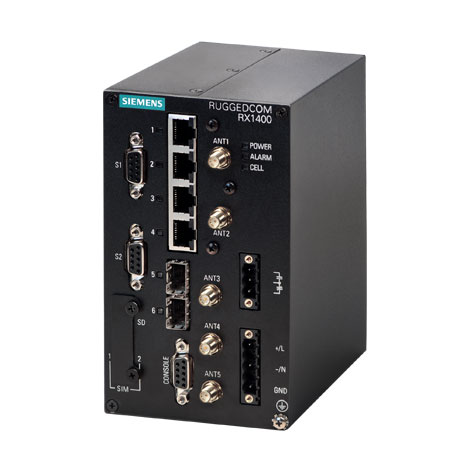1. EXECUTIVE SUMMARY
-
CVSS v3 8.8
- ATTENTION: Exploitable remotely/low skill level to exploit
- Vendor: Siemens
- Equipment: ROX II
- Vulnerabilities: Improper Privilege Management
2. RISK EVALUATION
Successful exploitation of these vulnerabilities could allow valid users to escalate their privileges and execute arbitrary commands.
3. TECHNICAL DETAILS
3.1 AFFECTED PRODUCTS
Siemens reports these vulnerabilities affect the following ROX II products:
- ROX II: All versions prior to v2.12.1
3.2 VULNERABILITY OVERVIEW
3.2.1 IMPROPER PRIVILEGE MANAGEMENT CWE-269
An attacker with network access to Port 22/TCP and valid low-privileged user credentials for the target device could perform a privilege escalation and gain root privileges.
CVE-2018-13801 has been assigned to this vulnerability. A CVSS v3 base score of 8.8 has been calculated; the CVSS vector string is (AV:N/AC:L/PR:L/UI:N/S:U/C:H/I:H/A:H).
3.2.2 IMPROPER PRIVILEGE MANAGEMENT CWE-269
An authenticated attacker with a high-privileged user account access via SSH interface in on Port 22/TCP could circumvent restrictions and execute arbitrary operating system commands.
CVE-2018-13802 has been assigned to this vulnerability. A CVSS v3 base score of 7.2 has been calculated; the CVSS vector string is (AV:N/AC:L/PR:H/UI:N/S:U/C:H/I:H/A:H).
3.3 BACKGROUND
- CRITICAL INFRASTRUCTURE SECTORS: Energy, Healthcare and Public Health, and Transportation Systems
- COUNTRIES/AREAS DEPLOYED: Worldwide
- COMPANY HEADQUARTERS LOCATION: Germany
3.4 RESEARCHER
Siemens reported these vulnerabilities to NCCIC.
4. MITIGATIONS
Siemens recommends users update to the new version (v2.12.1) as soon as possible. This version can be found at the following location on the Siemens website:
https://support.industry.siemens.com/cs/us/en/view/109760683
To reduce risk, Siemens recommends that administrators restrict network access to prevent potential attackers from accessing Port 22/TCP, if possible.
As a general security measure, Siemens strongly recommends protecting network access to devices with appropriate mechanisms. In order to operate the devices in a protected IT environment, Siemens recommends configuring the environment according to Siemens’ operational guidelines for industrial security (https://www.siemens.com/cert/operational-guidelines-industrial-security), and following the recommendations in the product manuals.
NCCIC recommends users take defensive measures to minimize the risk of exploitation of this vulnerability. Specifically, users should:
- Minimize network exposure for all control system devices and/or systems, and ensure that they are not accessible from the Internet.
- Locate control system networks and remote devices behind firewalls, and isolate them from the business network.
- When remote access is required, use secure methods, such as Virtual Private Networks (VPNs), recognizing that VPNs may have vulnerabilities and should be updated to the most current version available. Also recognize that VPN is only as secure as the connected devices.
NCCIC reminds organizations to perform proper impact analysis and risk assessment prior to deploying defensive measures.
NCCIC also provides a section for control systems security recommended practices on the ICS-CERT web page. Several recommended practices are available for reading and download, including Improving Industrial Control Systems Cybersecurity with Defense-in-Depth Strategies.
Additional mitigation guidance and recommended practices are publicly available on the ICS-CERT website in the Technical Information Paper, ICS-TIP-12-146-01B–Targeted Cyber Intrusion Detection and Mitigation Strategies.
Organizations observing any suspected malicious activity should follow their established internal procedures and report their findings to NCCIC for tracking and correlation against other incidents.
No known public exploits specifically target these vulnerabilities.
Source:
https://ics-cert.us-cert.gov/advisories/ICSA-18-282-03
